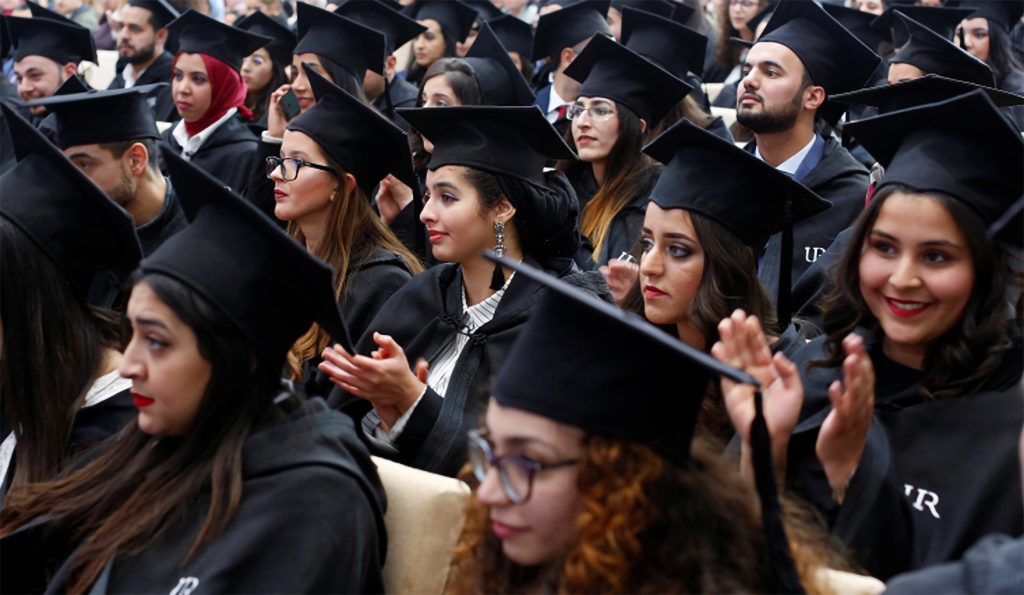
Approximately 70% female engineering graduates residing in the country are either unemployed or out of labor force. Gallup & Pride Research reveals
Out of 28,920 female engineering graduates, 8,146 (28%) were employed, 6,054 (20.9%) unemployed and 14,720 (50.9%) were out of labour force: Gallup & Pride Research reveals
KARACHI ( Web News )
Analysis of the labor force survey 2020-21 reveals that approximately 70% female engineering graduates residing in the country are either unemployed or out of labor force.
Out of total 28,920 female engineering graduates, 6,054 (20.9%) are unemployed and 14,720 (50.9%) were out of labor force while only 8,146 (28%) were employed.
This was revealed in joint research conducted by Gallup Pakistan and PRIDE, using data from Labour Force Survey 2020-21 on female engineering graduates (including individuals who have passed Bachelors, MS/M.Sc., M.Phil. or Ph.D. degree in any field of engineering) and their status in the labor market.
The analysis of the data for the three groups (employed, unemployed and out of labour force) by region (rural and urban), shows that around 21.1% of all engineering graduates resided in the rural regions in the country while 78.9% of them were in the urban areas. The analysis of the data shows that within the rural region, 43.9% of engineering graduates were employed, while around 36.3% were unemployed.
The proportion of engineering graduates who opt to remain out of labour force in the rural region was substantially lower (19.8%) than the national average (50.9%). The analysis with respect to urban areas shows that around 24.0% of female engineering graduates were employed, while 16.8% were unemployed. The major share of female engineering graduates remains out of labour force in the urban region at more than 59.2%.
The comparison of the figures of employed engineering graduates, by region, show that the employment opportunities for the female engineering graduates are significantly higher in the urban areas (67.2%) compared to the rural areas (32.8%). The proportion of unemployed engineering graduates was lower in the rural areas (36.5%) compared to those in the urban areas (63.5%). On the other hand, out of the total number of engineering graduates who are out of labour force (14,720) – the predominant share is in urban areas (91.8%) compared to rural areas (8.2%).
It is pertinent to mention here that around 64.2% of those engineering graduates who opted to remain out of labour force were married and 28.42% were never married. The analysis by age group shows that the highest share of all female engineering graduates is in the age bracket of 25-34 years (50.9%), followed by those in the age group of 35-44 years (21.7%).
Bilal Gilani, Executive Director at Gallup Pakistan said “Trained and educated females either being unemployed or not interested in work is a major issue requiring dialogue and discussion in Pakistan. This research shows that only 3 in 10 female engineers are working and 7 in 10 are not working. A typical engineer produced from a government university receives as high as 5 million Rs in subsidy. If these female graduates are not working this 5 million investment by government is a sunk cost. For a resource constrained country like Pakistan, this should be a source of concern for not just policy makers but also tax payers whose money is going to waste”
Dr. Umer Khalid, Director PRIDE highlights that “half of all female engineering graduates opt to remain out of labour force, and the substantial majority of these ‘out of labour force’ graduates are residing in urban areas and are married. This is indicative of the presence of a social trend of getting professional education in order to secure better marriage prospects. The government needs to review the policy of allocation of seats at least in the public sector engineering colleges/ universities to ensure value for money”.
Gallup Pakistan and PRIDE have joined hands to analyze and disseminate useful and policy relevant economic and social research data for wider policy circles in Pakistan. The current series of Reports would be looking at Labour Force Survey 2020-21 which is a national survey conducted by Pakistan Bureau of Statistics (PBS) to compile labour market statistics. The survey collected data from close to 99,900 households across Pakistan, giving district level representative results for the first time. Our current analysis is for Pakistan, with regional breakup.

